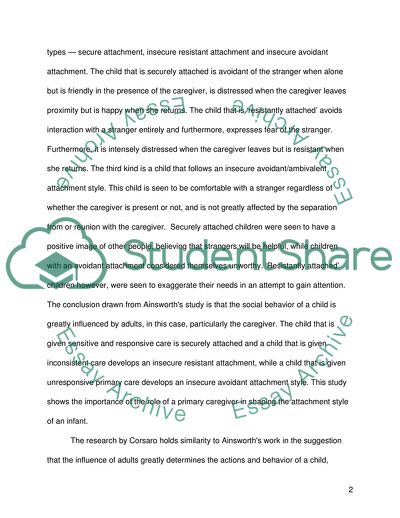Cite this document
(Mary Ainsworth and William Corsaro on Children Relationships Essay, n.d.)
Mary Ainsworth and William Corsaro on Children Relationships Essay. https://studentshare.org/psychology/1780182-compare-and-contrast-research-by-mary-ainsworth-and-william-corsaro-on-childrens-relationships
Mary Ainsworth and William Corsaro on Children Relationships Essay. https://studentshare.org/psychology/1780182-compare-and-contrast-research-by-mary-ainsworth-and-william-corsaro-on-childrens-relationships
(Mary Ainsworth and William Corsaro on Children Relationships Essay)
Mary Ainsworth and William Corsaro on Children Relationships Essay. https://studentshare.org/psychology/1780182-compare-and-contrast-research-by-mary-ainsworth-and-william-corsaro-on-childrens-relationships.
Mary Ainsworth and William Corsaro on Children Relationships Essay. https://studentshare.org/psychology/1780182-compare-and-contrast-research-by-mary-ainsworth-and-william-corsaro-on-childrens-relationships.
“Mary Ainsworth and William Corsaro on Children Relationships Essay”. https://studentshare.org/psychology/1780182-compare-and-contrast-research-by-mary-ainsworth-and-william-corsaro-on-childrens-relationships.


